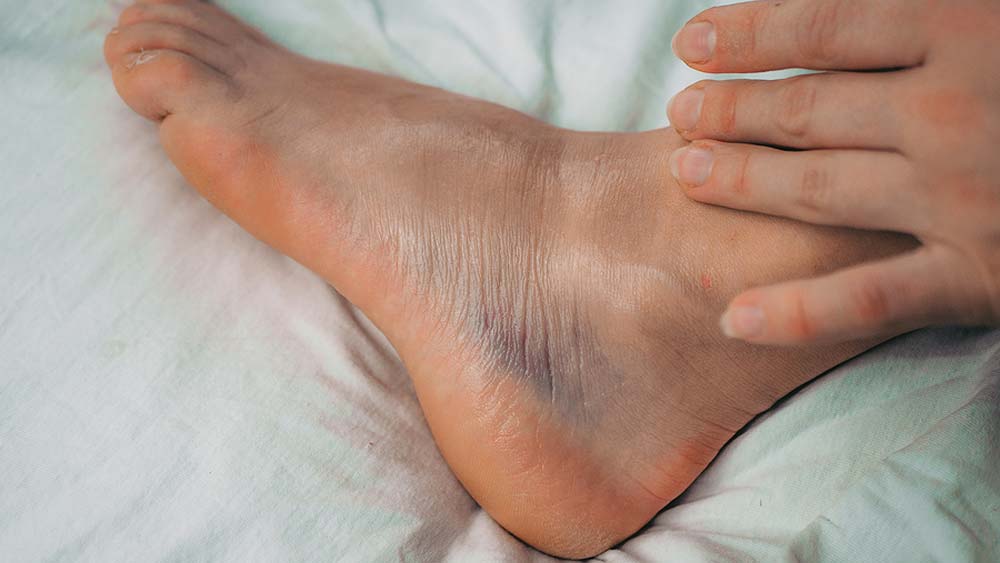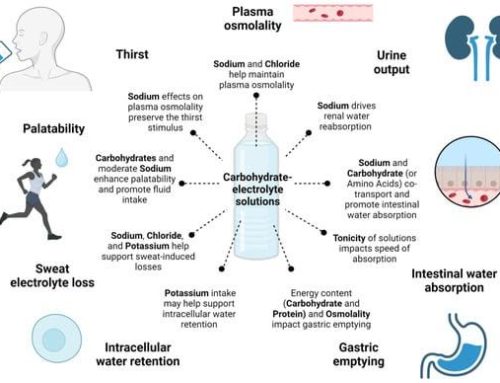Sprained ankles are common injuries that can take an annoyingly long time to get better. Whether you hurt yourself playing tennis or by tripping as you walked down the street, we all want to know: How long does it take for a sprained ankle to heal?
Sprained ankle recovery times greatly depend on the severity of the injury and other individual risk factors. However, on average, a sprained ankle should heal within 1 week to 4 months.
As you can see, 1 week to 4 months is a pretty wide range of times for a sprained ankle to get better. Up next, we’ll walk you through the basics of the sprained ankle recovery process, so you know what to expect as you heal.
NOTE: This article is for informational purposes only and does not serve as a substitute for qualified medical care. If you have any questions about your particular injury, it’s best to consult your physician or physical therapist for more specific guidance.
Contents
How Long Does It Take For A Sprained Ankle To Heal?
Sprained ankle recovery times depend on how severe the injury was in the first place. Here’s some general guidance about how long (approximately) it will take a sprained ankle to heal, based on the severity of the injury.
Mild Sprained Ankle (Grade I)
According to Harvard Medical School, a mild or Grade I sprained ankle is any injury where the ankle is painful, but there was little actual damage to the ligaments. With a Grade I injury, people can still retain most of the range of motion of their ankle.
Mildly sprained ankles usually come with the following signs and symptoms:
- Mild, generalized pain
- Swelling and tenderness
- Limited or no bruising
What distinguishes a mild sprain from more severe forms of a sprained ankle, however, is that they’re generally still capable of being load-bearing. Since a mild sprain doesn’t cause much damage to the actual ankle nor its ligaments, most cases show little to no signs of joint instability.
Mild Sprained Ankle Recovery Time
The majority of mild sprained ankles recover within 1-3 weeks with proper rest and treatment (more on that later). However, people who are older, are immunocompromised, have a history of repeated sprains on the same ankle, or cannot adequately rest the injured ankle may have longer recovery times.
If you believe that you have a mild sprained ankle but don’t see any signs of improvement within the first week or so, it’s worth visiting your doctor for an evaluation.
Moderate Sprained Ankle (Grade II)
Moderate or Grade II sprained ankles are similar to mild injuries, but there’s usually some damage to the actual ligaments (including a partial tear). As a result, the ankle can feel loose, and some people might find that they feel unstable when bearing weight on the ankle.
A moderately sprained ankle usually has the following signs and symptoms:
- Moderate pain
- Swelling and tenderness around the ankle
- Likely some bruising
- Slight to moderate loss of range of motion
- A decrease in ankle function
- Pain when bearing weight or walking
- Moderate joint instability
The key factor here is that a Grade II sprained ankle often feels fairly unstable. However, while painful, many people are still able to bear weight on the ankle for short periods.
Moderate Sprained Ankle Recovery Time
With a moderately sprained ankle, most people are able to recover within 3-6 weeks. As with mildly sprained ankles, this recovery time can vary from person to person based on past medical history and the chosen course of treatment.
Severe Sprained Ankle (Grade III)
Severe or Grade III sprained ankles occur when someone completely tears at least one ligament in their ankle. Thankfully, this isn’t as common as Grade I and Grade II sprains. People who experience a severe strain will notice that their ankle feels loose and unstable.
A severely sprained ankle has many of the signs and symptoms associated with a moderately sprained ankle. However, the defining characteristic of a severely sprained ankle is that it won’t tolerate any weight or walking.
So, people who have Grade III sprains generally have a lot of difficulty with walking and are unable to fully move their foot in all directions. There is also usually substantial bruising and discoloration with a severely sprained ankle.
Severe Sprained Ankle Recovery Time
Due to the damage caused to the ligaments, most severe or Grade III ankle strains take several months to heal. In a small number of cases, it can be many months before the ankle will fully heal and for someone to regain full range of motion in their lower leg.
Although the vast majority of Grade III ankles heal with a full course of physical therapy, in very rare cases, surgery can be necessary. This is particularly true in instances where patients routinely sprain their ankles or show other signs of instability in the ankle, as this can put them at increased risk for future osteoarthritis. Of course, if someone with a Grade III sprain has to have surgery, their recovery time can be quite extensive.
How Can I Make My Sprained Ankle Heal Faster?
No one wants to have a sprained ankle, so helping your ankle heal as fast as it can is ideal. The good news is that there are steps you can take to encourage your sprained ankle to heal.
RICE Protocol For Sprained Ankles
According to the National Athletic Trainers’ Association, the use of the RICE method is nearly universally accepted as the best current practice for managing an ankle sprain.
What exactly is the RICE protocol? Thankfully, it’s quite simple:
- REST – The first part of RICE is to rest your ankle. As soon as you injure your ankle, it’s time to sit down, relax, and stop putting weight on your foot.
- ICE – Once you’ve taken a seat, you can apply ice to your injured ankle for up to 20 minutes at a time. The Hospital for Special Surgery recommends doing this at least 2 times a day, up to once every 2 hours for about 3 days after the injury.
- COMPRESSION – An ACE wrap or other similar compression wraps are recommended for helping to minimize swelling in your ankle and, subsequently, recovery time. Using a compression wrap also helps prevent ligaments from remaining in a stretched-out position. If this happens for too long, your ankle can eventually develop ankle instability, which can become a serious problem.
- ELEVATION – The final step of the RICE protocol is to elevate your ankle. Ideally, you can lie down and elevate your ankle, so it’s above the level of your heart for at least a few hours each day (for the first few days) to reduce swelling.
OTC Anti-Inflammatories
Both the National Athletic Trainers’ Association and researchers from the University of Oklahoma note that there is strong evidence that suggests anti-inflammatories can help decrease pain and improve range of motion in a sprained ankle in the short term.
These organizations and studies recommend the use of NSAIDs (non-steroidal anti-inflammatories), such as ibuprofen (Advil) and naproxen (Alleve), because they help to reduce swelling.
However, it’s important to note that acetaminophen (Tylenol, Paracetamol) is not an anti-inflammatory drug and won’t provide the same swelling reduction that you’d find in an NSAID. Instead, it’s an analgesic that works by chemically altering the way your body senses pain. Therefore, while it can help pain relief, it’s not the ideal OTC medication for a sprained ankle.
Moreover, even though these drugs are available OTC, they can and do cause side effects, particularly for people with pre-existing conditions, allergies, and for people on multiple medications. Be sure to consult with your doctor before taking any of these medications for a sprained ankle.
Physical Therapy
For more serious sprained ankles or for people who have a history of repeated sprains, physical therapy may be required. In cases of very severe sprains, most doctors won’t even consider surgery and other more invasive interventions until after someone does a full course of physical therapy to restore function and range of motion to the ankle.
Final Thoughts
Most mild and moderate sprained ankles will heal within a few weeks if you properly follow the RICE protocol. For severe sprains, RICE (followed by extensive physical therapy) can often have people back on their feet after a few months.
That being said, if you have very persistent moderate to severe pain in your ankle, plus a lot of bruising, discoloration, and swelling after 3-5 days of following the RICE protocol, it is worth seeing your doctor.
A broken ankle and a sprained ankle can appear similar, so if you’re concerned that your ankle isn’t healing as it should, don’t hesitate to seek out further medical care.








Leave A Comment